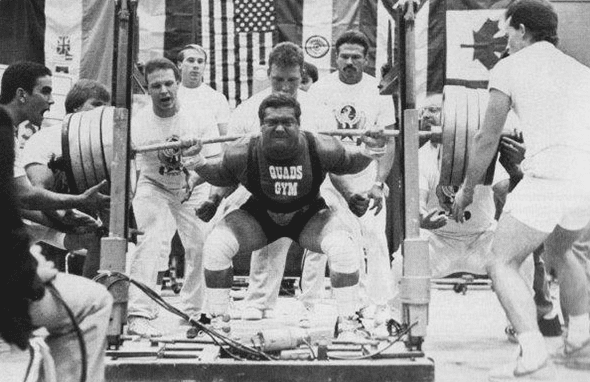Six Steps for Successful Squatting
By: Josh Bryant

If chicken legs were an STD, squats would be penicillin!
A strong squat-to-bodyweight ratio is correlated with sprint speed, jumping ability and agility. And hell, it’s one of the three contested lifts in powerlifting.
Over the course of bodybuilding history, those with the freakiest leg development hold a fundamentalist allegiance to this muscle-morphing, miracle exercise.
Almost every legitimate strength program has at least some sort of squatting variation in it. As someone who has squatted over 900 pounds in competition and trained numerous world record holders in the squat, I want to share with you six steps for successful squatting.
Prioritize
H.L. Hunt says, “Decide what you want, decide what you are willing to exchange for it. Establish your priorities and go to work.” With regards to squatting the biggest weights, squatting must become your number one priority in the gym. Structure your training schedule so squat workouts fall on days with the most favorable conditions. If every Thursday you have to work a double shift—don’t squat Thursdays. Take care of business outside of the gym; this means adequate sleep, proper nutrition, supplementation and yes, you will be the square at the party because no alcohol for you plus you are leaving the brouhaha early to get some sleep.
Alignment
From elite-level powerlifters to lifters so weak they have to wrap their knees to sit on the pot—many lifters fail when it comes to alignment. This is very basic, but remember, basic does not mean elementary–it means fundamental. When you get under the squat bar, make sure your hands, torso and feet are aligned evenly; set reference points you can repeatedly use. This will minimize the chance of injury or missing the weight and will maximize the amount of weight you squat.
Walking Out
A nice, long, leisurely walk can do wonders for your mental and physical health but will send your squat to hell in a hand basket quickly. Squat walkouts need to be short and deliberate, what do you do at the honky tonk on a Saturday night? Two step—that is our goal in the squat, a two-step walkout, no more than three. Here is a break down on how to efficiently walkout: lift the weight off the rack, make sure the bar has settled, and then take one step on each leg to where your squat stance is. If this is too demanding, attempt to do this and a third shuffle step might be required to get in your optimal stance. For strength purposes or muscle building, the goal is to maximize squatting, not take a long walk.
Staying Tight
Breathe in and breathe out is all good and dandy for the geriatrics aquatic strength training class but with squatting barbells for maxes will fold you like an accordion! Taking in and holding a big breath before squatting increases intra/abdominal pressure and intrathoracic pressure. This keeps your spine stable and rigid and allows your core to adequately transfer force into the barbell, so you can lift more weight and reduce the chance of injury. You need to brace your core and get tight from head to toe, so tight that if we stuck a piece coal up your ass, six months later it would come out a diamond. Any loss of tightness is a loss of tension that could be applied to the barbell.
Grease the Groove
The way you get to Carnegie Hall is practice, practice, and more practice. The same holds true with squatting; to take full advantage of this you must treat the light weights like they are heavy and the heavy weights like they are light. The goal is not muscle confusion it’s to build the most efficient motor pattern possible. Every single set and rep should be as close to technically identical as possible; think set up, depth, descent speed, walking out– doing this with light weight gives you tens of thousands of more practice reps over the span of your lifting life. Squatting is not just an equation of brute force it is a skill, practice perfect technique.
Train Cluster Sets
Our goal here is to build squat strength; squat strength is measured with a one-repetition max. A traditional, played out 1990s YMCA hypertrophy protocol of three sets of 10 reps will give you three first reps, one each set. You could do the same amount of volume and do 10 sets of three reps, now all of a sudden you have performed 10 first reps. To get better at one-repetition maxes, you need to train more first reps. Furthermore, this will allow you to focus greater attention to technique on each individual reps and perform each rep with a greater amount of power. Practice how you play.
Final Thoughts
Synergy means the sum of two or more forces is greater than the sum of their individual effects. I have given you six tools that combined will produce a synergistic effect on your squat—enough talk, time to hit the squat rack.
Become a Bodybuilding Specialist!

